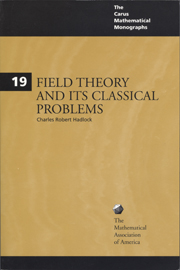SOLUTIONS TO THE PROBLEMS
Summary
Section 1.1
1. Use Lemma la to show that if a and b are constructible, then so too are a + b, a − b, ab, and, when b ≠ 0, a/b.
By hypothesis, segments of lengths ∣a∣ and ∣b∣ may be constructed, beginning with a unit segment. To obtain the constructibility of the number a + b, we want to construct a segment of length ∣a + b∣. If a and b have the same sign, ∣a + b∣ = ∣a∣ + ∣b∣, in which case the addition part of Lemma la gives the result. If a and b have opposite signs, then either ∣a + b∣ = ∣a∣ − ∣b∣ or ∣a + b∣ = ∣b∣ − ∣a∣, depending on which difference is positive. In this case the subtraction portion of Lemma la applies. That a − b is constructible follows at once from the preceding, since a − b = a + (− b) and if b is constructible, then by the definition of constructibility so is − b. Multiplication is immediate from Lemma la, since ∣ab∣ = ∣a∣ • ∣b∣; and so too is division.
2. If M and N are positive integers, show that if is rational, then, in fact, it must be an integer.
- Type
- Chapter
- Information
- Field Theory and its Classical Problems , pp. 221 - 318Publisher: Mathematical Association of AmericaPrint publication year: 1975



